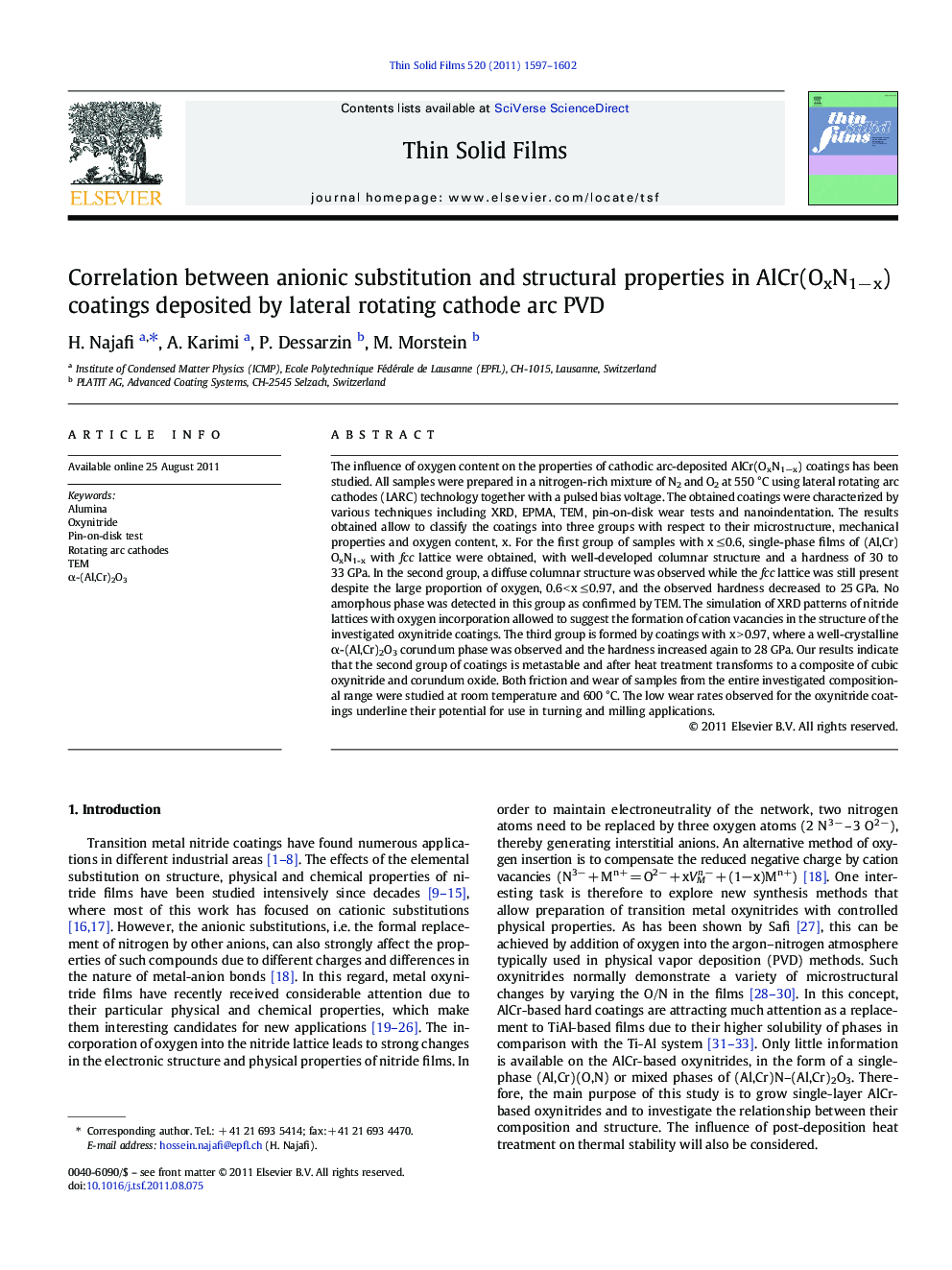| Article ID | Journal | Published Year | Pages | File Type |
|---|---|---|---|---|
| 1668232 | Thin Solid Films | 2011 | 6 Pages |
The influence of oxygen content on the properties of cathodic arc-deposited AlCr(OxN1−x) coatings has been studied. All samples were prepared in a nitrogen-rich mixture of N2 and O2 at 550 °C using lateral rotating arc cathodes (LARC) technology together with a pulsed bias voltage. The obtained coatings were characterized by various techniques including XRD, EPMA, TEM, pin-on-disk wear tests and nanoindentation. The results obtained allow to classify the coatings into three groups with respect to their microstructure, mechanical properties and oxygen content, x. For the first group of samples with x ≤ 0.6, single-phase films of (Al,Cr)OxN1-x with fcc lattice were obtained, with well-developed columnar structure and a hardness of 30 to 33 GPa. In the second group, a diffuse columnar structure was observed while the fcc lattice was still present despite the large proportion of oxygen, 0.6 < x ≤ 0.97, and the observed hardness decreased to 25 GPa. No amorphous phase was detected in this group as confirmed by TEM. The simulation of XRD patterns of nitride lattices with oxygen incorporation allowed to suggest the formation of cation vacancies in the structure of the investigated oxynitride coatings. The third group is formed by coatings with x > 0.97, where a well-crystalline α-(Al,Cr)2O3 corundum phase was observed and the hardness increased again to 28 GPa. Our results indicate that the second group of coatings is metastable and after heat treatment transforms to a composite of cubic oxynitride and corundum oxide. Both friction and wear of samples from the entire investigated compositional range were studied at room temperature and 600 °C. The low wear rates observed for the oxynitride coatings underline their potential for use in turning and milling applications.
